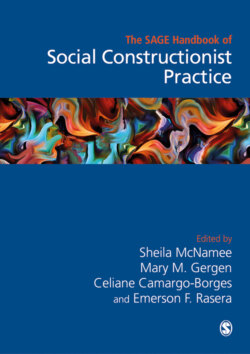Читать книгу The Sage Handbook of Social Constructionist Practice - Группа авторов - Страница 54
На сайте Литреса книга снята с продажи.
Introduction
ОглавлениеIn a rapidly changing world with increasingly complex problems, such as social and economic inequities, medical disasters, climate change and globalization, collaboration is needed more than ever. Due to the complexity of the world's problems, the United Nations (UN) has even devoted one of its 17 sustainability goals (SDGs) to collaboration.
Around the world, nations and communities are struggling to face the demands of addressing the complexity of the SDGs. This includes finding viable solutions for problems that the civil sector, the public sector, businesses, politicians, media and academia cannot solve on their own. At the same time, in several countries across the globe, we are witnessing a decrease in the broad democratic involvement of citizens, alongside the threat of increasing populism following the rise of anti-global and anti-immigrant political movements (Pestoff, 2019; Smith, 2009). Thus, there is a need for increased citizen participation at all levels of societal development.
Active citizen participation can facilitate the resolution of and joint action around some of the most tenacious problems facing governments across the world and help win popular support for such measures (Pestoff, 2019). Although citizen participation is key for collaboration based on democratic principles and values, the need for innovation and collaboration includes constructing new relationships and structures between actors and institutions in an ecologically oriented ‘whole-of-society approach’ (Marmot et al., 2020; WHO, 2019). This involves capacity building that cuts across authority structures, organizations, sectors and stakeholders at all levels, and this is increasingly acknowledged as a necessary approach to addressing these societal challenges (Krogstrup and Brix, 2019; Ostrom, 1996; Brandsen et al., 2018; WHO, 2013, 2019). Such collaborations enable societies, governments and communities to enhance problem solving and innovation as they mobilize the co-construction of ideas, experiences and resources and the ability to work together towards mutual goals (Bradbury, 2015; Gergen, 2014; Hersted et al., 2020). To meet these demands, we suggest that Collaborative Action Research (CAR) methodologies are an important approach to research and social change. Following Greenwood and Levin (2007), action research can help us build a better, freer, fairer and more socially just society.
In this chapter, we explore CAR as an approach to co-construction to address the complex societal problems described above. Gergen (2020, p. xii) asks the following: ‘If action research is a process of co-construction, then what kind of process is this, how can it be done well, what are the obstacles, what innovations are invited?’ These are critical questions for our chapter. Although CAR is an approach that can be used in a wide range of disciplines, we will focus on social and relational processes. The chapter is a response to the need for collaborative, participatory action to address the increasing complexity in a fast-changing world and promote human dignity and flourishing in present and future generations. We will describe a framework for Collaborative Action Research through a social constructionist lens, accompanied by a set of principles for researchers and practitioners working on collaborative action-oriented research and innovation. To contextualize this framework, we invite you to explore some interconnected assumptions and what we believe to be vital prerequisites.
